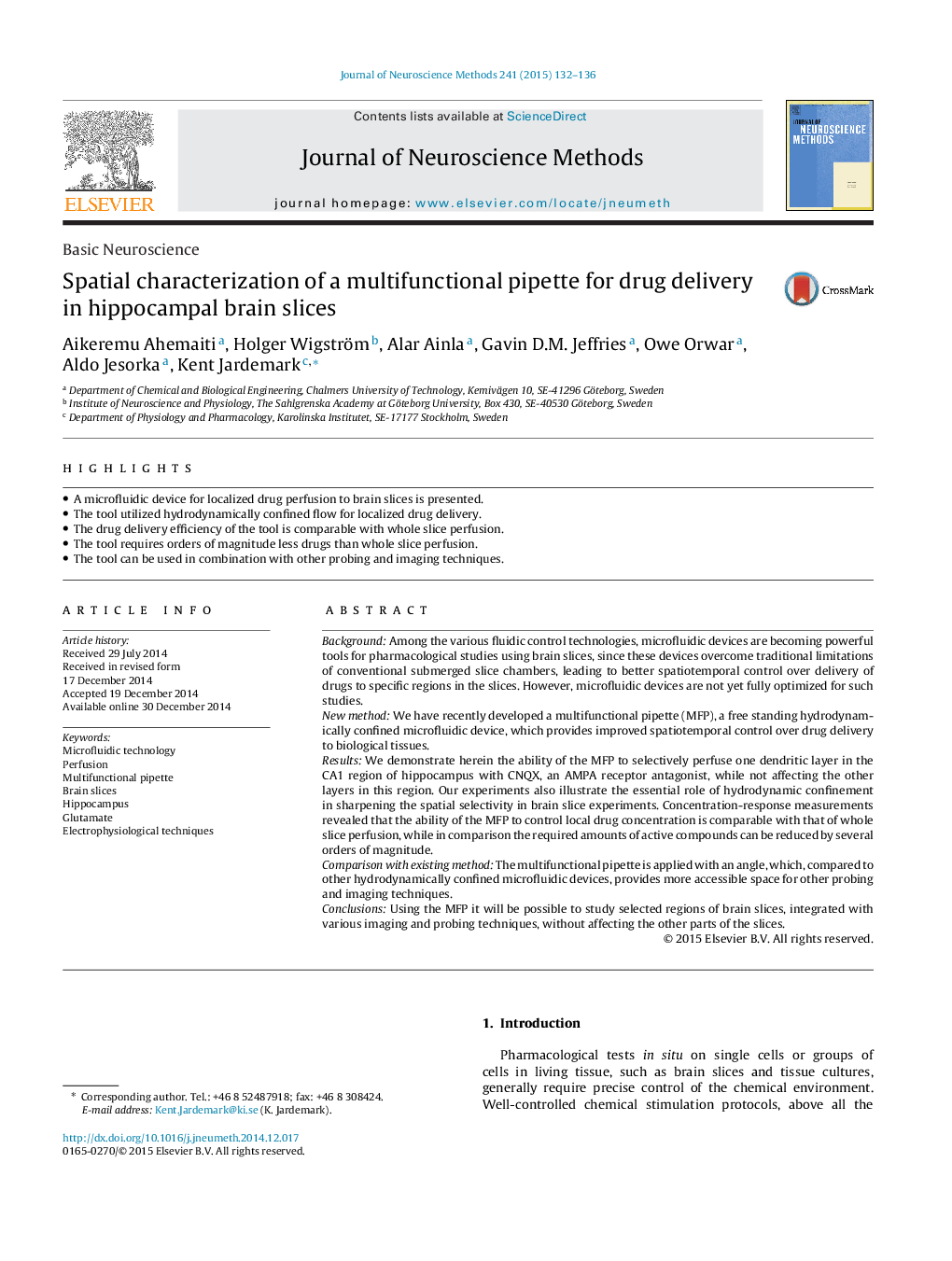| Article ID | Journal | Published Year | Pages | File Type |
|---|---|---|---|---|
| 6268349 | Journal of Neuroscience Methods | 2015 | 5 Pages |
â¢A microfluidic device for localized drug perfusion to brain slices is presented.â¢The tool utilized hydrodynamically confined flow for localized drug delivery.â¢The drug delivery efficiency of the tool is comparable with whole slice perfusion.â¢The tool requires orders of magnitude less drugs than whole slice perfusion.â¢The tool can be used in combination with other probing and imaging techniques.
BackgroundAmong the various fluidic control technologies, microfluidic devices are becoming powerful tools for pharmacological studies using brain slices, since these devices overcome traditional limitations of conventional submerged slice chambers, leading to better spatiotemporal control over delivery of drugs to specific regions in the slices. However, microfluidic devices are not yet fully optimized for such studies.New methodWe have recently developed a multifunctional pipette (MFP), a free standing hydrodynamically confined microfluidic device, which provides improved spatiotemporal control over drug delivery to biological tissues.ResultsWe demonstrate herein the ability of the MFP to selectively perfuse one dendritic layer in the CA1 region of hippocampus with CNQX, an AMPA receptor antagonist, while not affecting the other layers in this region. Our experiments also illustrate the essential role of hydrodynamic confinement in sharpening the spatial selectivity in brain slice experiments. Concentration-response measurements revealed that the ability of the MFP to control local drug concentration is comparable with that of whole slice perfusion, while in comparison the required amounts of active compounds can be reduced by several orders of magnitude.Comparison with existing methodThe multifunctional pipette is applied with an angle, which, compared to other hydrodynamically confined microfluidic devices, provides more accessible space for other probing and imaging techniques.ConclusionsUsing the MFP it will be possible to study selected regions of brain slices, integrated with various imaging and probing techniques, without affecting the other parts of the slices.
